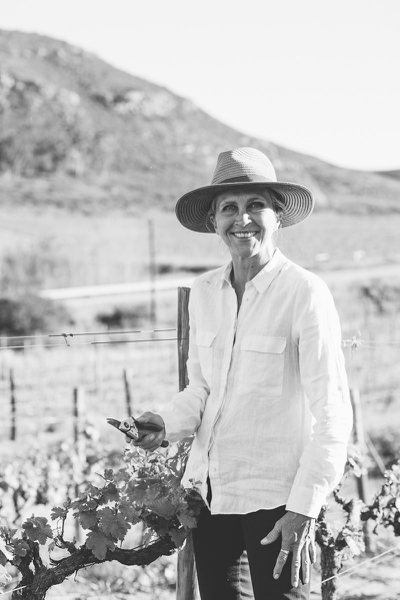Oldest Vines
An Interview with Rosa Kruger
In South African Wine on 06 Apr 2015
I learned about Rosa Kruger while reading Jancis Robinson’s blog and wanted to talk to her right away. Kruger is the creator of the beautiful I Am Old project, researching and mapping South Africa’s very oldest vines to create a resource for farmers and wineries as they experiment with sites and grapes showing promise. And her work with Eben Sadie, one of South Africa’s most prominent wine pioneers, caught my attention as a fan of the Swartland wine region both of them call home.

As a former journalist, Kruger knows a good story and has a knack for research, and she’s put these skills to in her career change from reporting to viticulture. Of course I was interested in her career path as much as her findings, so I felt quite lucky when she graciously agreed to the following interview.
What made you want to take on this project?
I saw old vines in Europe and tasted various wines form old vines and it just made so much sense to me. I came back here to SA, started noticing old vines all over, and started listing them.
This seems like a massive effort. What did it take to compile all this history, and what was the hardest part?
It took years of driving around, talking to farmers, searching for strange sites, phoning around, and recording it in pieces of paper lying around in my truck! The hardest part was to convince farmers not to take these old vines out but to work with them and then to find a good winemaker to make the wine.
But now the project has found its own power. Winemakers look on the website and contact farmers directly and every now and then I hear of a great wine being made from some old vineyard. It helped that the first old vines we found and made wine from is still one of the best sites; it was shown to me by my friend Johan Viljoen. The vineyards were farmed by three very special farmers and the wine was made by my other friend Eben Sadie, Skurfberg Kokerboom!
It seems you’ve been instrumental in the Swartland wine movement that has really taken off in recent years. Do you still consider Swartland the most exciting or underrated region, or has this project introduced you to “new” (old) areas of potential?
I have not been instrumental at all in the Swartland wine movement. Swartland is only one of the five areas I try to concentrate on in finding and managing special sites for people I work with. Swartland is special because I believe the dryland vines and bush vines give a certain concentration and focus to vines that is special to this area. And there is a lot of smaller old vine parcels here.
There are three other areas I really believe will be really important in future as they will produce very distinctively different wines––high altitude, special soils, and surrounded mostly by natural fynbos––but only one of these areas have old vines. The other two have no vineyards at all but enormous potential. I’m still trying to convince farmers to plant vines here and we might just see mencía in one of them!
Did you discover grape varieties that are not currently considered prominent in South Africa’s wine industry, but used to be? Any ideas for future plantings or expansions based on this?
There is a renewed interest in cinsault and sémillon––these two varieties are the oldest in our country. As the interest in old vines grew, winemakers started being more interested in old cinsault and old sémillon and are now making wonderful wines from them. This includes sémillon gris.
We have started importing a whole list of new varieties into the country: mencía, assyrtiko, macabeu, etc. Eben Sadie is producing some of these on a small scale next year so we can taste them and decide what is suited to this terroir or not. Exciting times. We are also doing massal selection from the best of the very old vines as they are adjusted to their landscape and express our SA terroir so brilliantly.
What’s it like farming these incredibly old sites?
Very rewarding. Treat them with respect and they just come alive with beautiful intense and focused fruit.
What’s the biggest lesson you learned from working on this project?
Nature wants to be respected, not dominated. Put your ear to the ground and listen what She says. That’s how you learn.
Finally, I’m a journalist with a love of wine, too. Why did you go from journalism to viticulture? Do you feel you’ve combined the two in a way that suits you?
I loved journalism because its so vibrant and every day is a new(s) day! But I dislike living in cities and I definitely don’t do well with a lot of people around me. Working well with plants, almost always working with a view over some lovely landscape, listening to the birds (of which there are many in SA vineyards), feeling the sun on your back and talking nonsense to the people in the field while working on vines make me happy. Produce a great wine on top of that every now and then and life can’t be better!
It’s a simple, honest and hardworking job. But hugely rewarding.